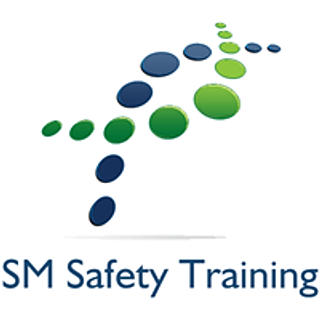From Combat Boots to Safety Shoes: Your Guide to Transitioning from Military to Civilian as a Health and Safety Instructor
- steven mullan
- Apr 8, 2024
- 4 min read
Updated: Aug 19, 2025
Written by Steven Mullan 08.04.2024
Hang up your uniform and lace up your teaching boots; it's time to march into a new battlefield – the classroom! As you salute goodbye to your military career, a thrilling new mission awaits you: becoming a civilian health and safety trainer. It's all about trading drills for skills and commands for demands of a different kind. This is your guide to navigating the switch from the regimented world of the forces to empowering civilians with the knowledge to keep their workplaces safe. Let's embark on this adventure together, where your service experience becomes your teaching edge. And I promise, it's not just about following orders – it's about leading the charge in safety and compliance!

1. Understanding the Role
Health and safety trainers are responsible for educating employees about workplace safety standards and practices. This involves conducting training sessions, developing educational materials, and assessing participants' understanding.
2. Qualifications Needed
IOSH Managing Safely
To teach IOSH Managing Safely courses, you must:
Being a Tech OSH member of IOSH (Institution of Occupational Safety and Health). This costs about £180 per year.
Have relevant health and safety qualifications, such as NEBOSH National General Certificate or equivalent.
You don’t need to do the IOSH trainer, trainer qualification; however, you must have a good CPD and hold a Level 3 in the lifelong learning sector (Teaching qual) or PTLLS.
Have to prove you have experience in health and safety management.
NEBOSH
For teaching NEBOSH (National Examination Board in Occupational Safety and Health) courses, the requirements are more stringent:
Hold a NEBOSH Diploma or equivalent level qualification.
Have substantial experience in health and safety.
Achieve a recognised teaching qualification, such as the Level 3 Award in Education and Training (AET) or higher.
Be affiliated with a NEBOSH Accredited Course Provider, as only these providers can offer NEBOSH courses.
First Aid
To become a first aid trainer:
Hold a current first aid at work certificate or higher.
Complete a teaching and assessing qualification, typically the Level 3 Award in Education and Training (AET) or its equivalent.
Regularly update your first aid and teaching skills.
3. Average Wage
The average wage for a health and safety trainer in the UK varies based on experience, location, and the type of training provided. As of my last update, the average annual salary ranges from £30,000 to £50,000. Freelancers or those running their own training businesses might earn more, depending on the volume and type of courses they offer.
4. Insurance Requirements for Health and Safety Trainers in the UK
As a health and safety trainer, having the right insurance is crucial to protect yourself and your business. Here are the types of insurance commonly required:
Professional Indemnity Insurance: This type of insurance is essential for protecting against claims of negligence or malpractice. If advice or training provided leads to a client's financial loss, professional indemnity insurance can cover legal costs and damages awarded against you.
Public Liability Insurance: This insurance is necessary if you conduct training in various locations or have clients coming to your premises. It covers claims made by third parties for injuries or damage to property as a result of your business activities.
Employers' Liability Insurance: If you employ staff, even on a part-time basis, you're legally required to have employers' liability insurance. This covers claims from employees who may suffer injury or illness as a result of their work.

Related reading: Military life to a civilian job in health and safety
5. Professional Memberships for Health and Safety Trainers in the UK
Belonging to professional bodies not only enhances your credibility as a health and safety trainer but also provides numerous benefits, including access to the latest industry information, professional development resources, and networking opportunities. Key memberships include:
IOSH (Institution of Occupational Safety and Health): As the Chartered body for health and safety professionals, IOSH is one of the most prestigious memberships to have. It offers a range of resources, training, and networking opportunities to its members.
NEBOSH Alumni: For those who have completed NEBOSH qualifications, joining the NEBOSH Alumni is a great way to stay connected with peers, access continuous learning resources, and keep up to date with the latest in health and safety practices.
RoSPA (The Royal Society for the Prevention of Accidents): Membership with RoSPA offers access to a wealth of safety-related resources, training discounts, and the opportunity to contribute to a safer world through advocacy and education.
CIEH (Chartered Institute of Environmental Health): While not exclusively for health and safety professionals, CIEH membership is beneficial for those involved in public health, including workplace health and safety. It provides access to industry news, career development resources, and professional standards.
Having the appropriate insurance and memberships is a testament to your commitment to professionalism and excellence in the field of health and safety training. It reassures clients and employers of your qualifications, ongoing education, and adherence to industry standards.
6. Fancy starting as an IOSH trainer?
Starting a new chapter as a health and safety trainer is not just rewarding; it’s a chance to really make a difference in keeping workplaces safe. At SM Safety Training & Consultancy, we’re all about helping folks like you, especially if you’re stepping into civilian shoes after serving in the military. Got a Level 3 Award in Education and Training and a NEBOSH General under your belt? Thinking about becoming an IOSH trainer? Well, you’ve knocked on the right door. We’re here to smooth out those wrinkles and get you where you need to be.
We get it; switching from military life to 'civilian street' isn’t always a walk in the park. That’s why we’re not just about the training; we’re here to offer you a part-time gig to get that all-important experience under your belt. It’s our way of ensuring you build on what you already know in a supportive, hands-on way. So, why not give us a shout? Let’s discuss how we can help you transition smoothly into your new career path with SM Safety Training & Consultancy.





Comments